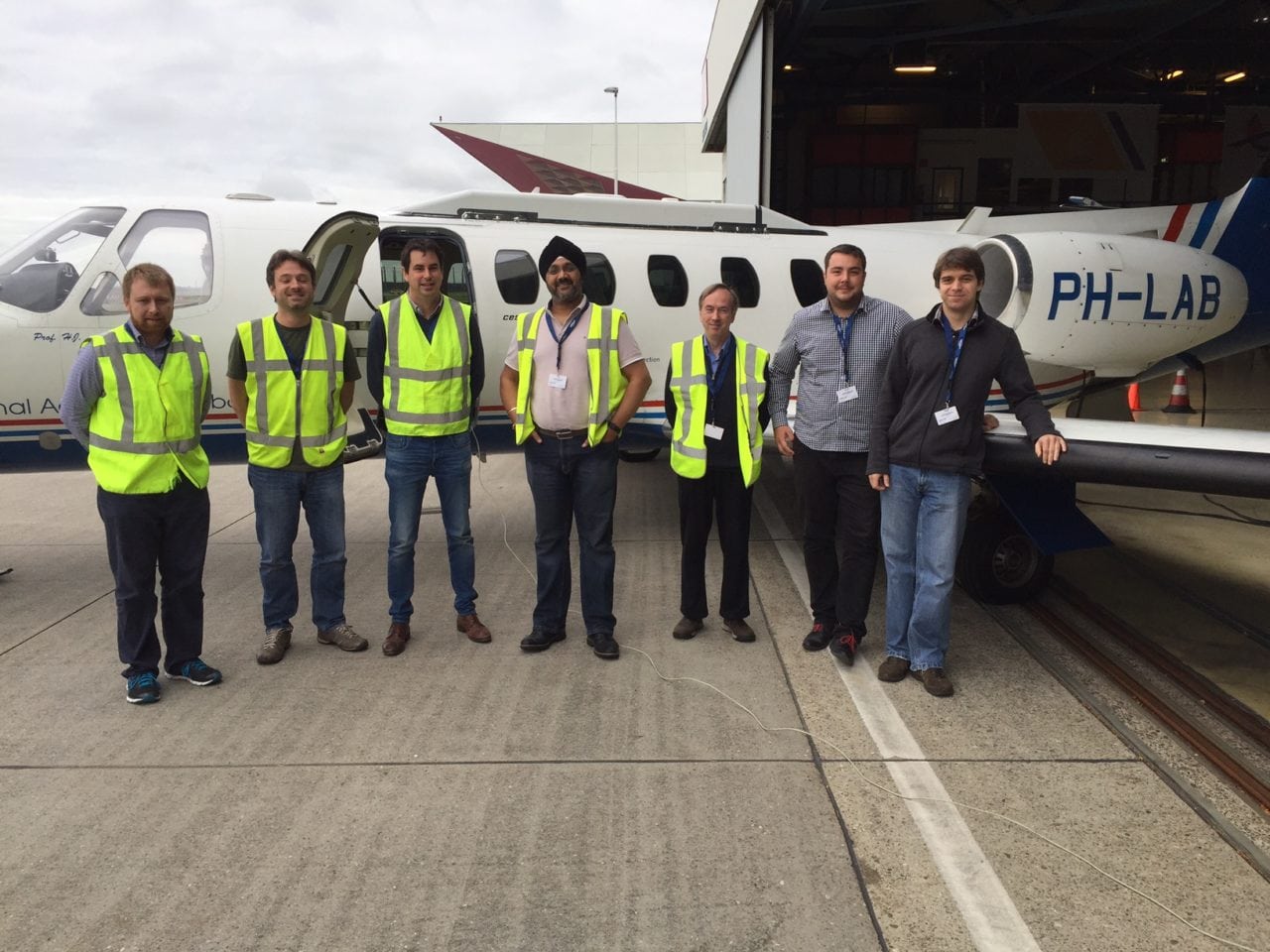 |
| Team members from Inmarsat, the European Space Agency (ESA) and Honeywell during recent test flights for the Iris Precursor air traffic modernization project. Photo: Inmarsat |
[Avionics Today 12-20-2016] The European Space Agency (ESA) and Inmarsat have completed the first flight trials for Iris Precursor, a project to enhance and modernize air traffic management over European airspace. Iris Precursor focuses on the development and deployment of secure satellite-based data link communications to significantly optimize European airspace capacity, leading to overall reductions in flight times, fuel burn and CO2 emissions. Iris Precursor aims to complement existing terrestrial data link communications (VDL2), which are expected to reach capacity in the near future.
The organizations conducted four test flights from Amsterdam under an initial phase to validate the use of satellite-based data link for secure communications and surveillance applications, and compare the capabilities to existing terrestrial data link communications. They were operated on aircraft from the Netherlands Aerospace Centre (NLR) using a prototype of the Iris terminal developed by Honeywell and connected to Inmarsat’s next-generation SwiftBroadband-Safety service through Inmarsat’s aviation partner, SITA.
Each of the flights travelled in different routes, covering all directions to ensure connectivity was maintained as the aircraft crossed satellite beams. The end-to-end connection between the aircraft and SITA’s Controller Pilot Data Link Communication (CPDLC) test ground system was tested extensively and allowed air traffic control messages to be exchanged using Aeronautical Telecommunications Network and Security gateways.
Inmarsat is conducting the Iris Precursor program with a consortium of companies from across the air traffic management, air transport, aeronautics and satcom industries, under the ESA’s umbrella. The program, which is supported by ESA’s program of Advanced Research in Telecommunications Systems (ARTES), will deliver services via Inmarsat’s SwiftBroadband-Safety platform. While the Iris Precursor program will initially focus on continental Europe, it will also benefit air traffic management in other regions around the world in the longer term.
Inmarsat is now working toward a second phase of flight trials for Iris at the end of next year. At this point, Iris technology will be considered fully validated. The next phases of the program include pre-operational validation by flying Iris technology on commercial flights in a real air traffic management environment. The Iris Initial Operational Capability (IOC) will go live as early as 2019, complementing terrestrial systems.